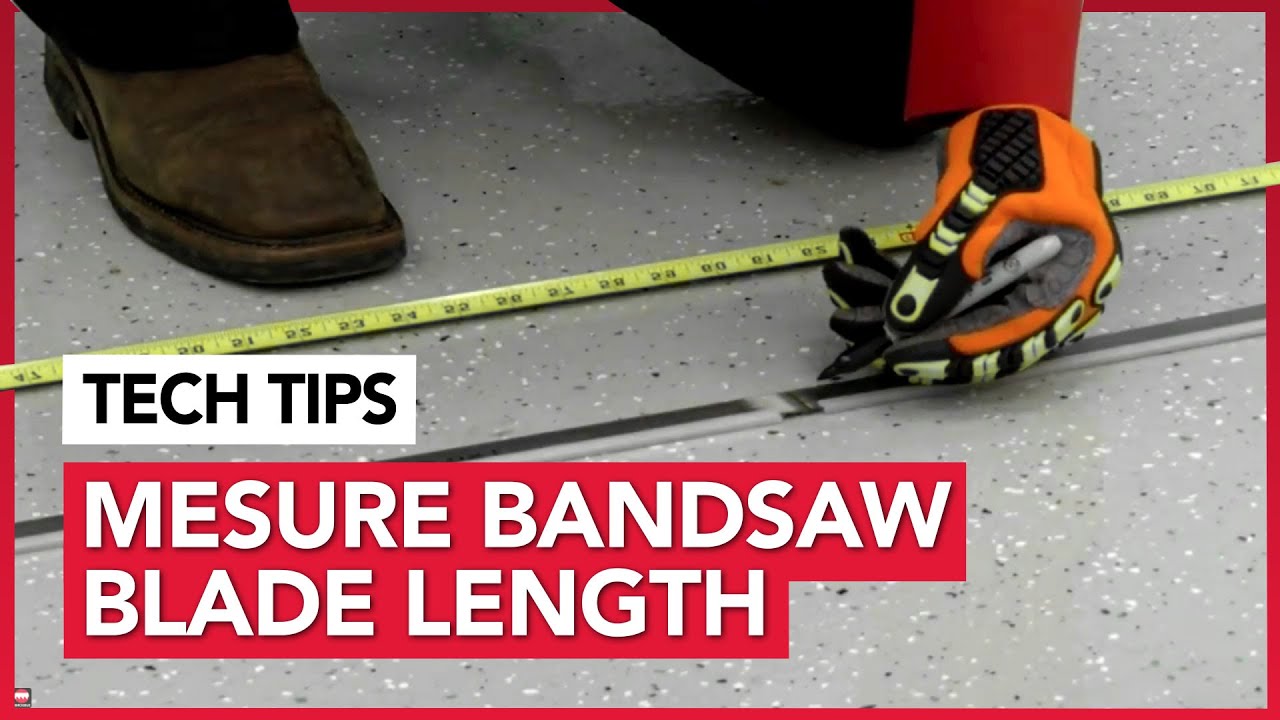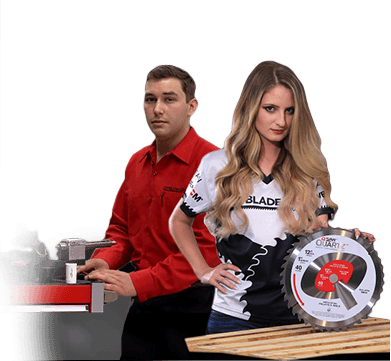Bandsaw blades play a pivotal role in the world of woodworking and metalworking. The efficiency and precision of your work largely depend on these blades. A key aspect of ensuring that your bandsaw is operating optimally is making sure that you have the correct bandsaw blade length. In this article, we will take a deep dive into how to measure bandsaw blade length accurately, and the importance of choosing the right blade for your bandsaw.
Understanding the Importance of Bandsaw Blade Length
Before we delve into the step-by-step guide, it’s crucial to understand why the correct bandsaw blade length is essential. A bandsaw blade that doesn’t fit properly can cause a myriad of problems. These issues may range from the blade slipping off the wheels, resulting in poor quality cuts, to potential damage to your bandsaw.
Therefore, accurately measuring your bandsaw blade length ensures the optimal functionality of your bandsaw, leading to precise cuts and a longer life for your machine. If you’re curious about how bandsaw blades are welded to achieve different lengths, you can read our informative article here.
Tools Required to Measure Bandsaw Blade Length
As Austin from Sawblade.com demonstrated, measuring the bandsaw blade length is a simple process, and it requires only a few basic tools. You will need:
- Safety gloves
- Protective eyewear
- A tape measure
- A marker
- Adequate floor space
Step-by-Step Guide: How to Measure Bandsaw Blade Length
Now that you have the necessary tools, let’s dive into the steps Austin laid out to accurately measure your bandsaw blade length.
Step 1: Safety Precautions
Safety should always come first when handling tools, especially when dealing with bandsaw blades. Equip yourself with safety gloves and protective eyewear before you start.
Step 2: Mark the Blade
Take the marker and make a visible mark on the bandsaw blade at the weld. This mark will serve as your reference point when measuring the length.
Step 3: Measure the Blade
Place the marked blade on the floor. Position the tape measure at the marked point. Now, walk the blade along the tape measure, ensuring it rolls smoothly, until the mark on the blade reaches the ground again.
Step 4: Record the Measurement
Where the mark ends on the tape measure indicates the total length of your bandsaw blade. Note down this measurement; you will need it when purchasing a replacement blade or when adjusting your bandsaw.
Tips to Ensure Accurate Measurements
Accurate measurements are paramount when determining bandsaw blade length. Here are a few tips to make sure your measurement is as precise as possible:
- Make sure your tape measure is long enough to measure the entire blade length.
- Ensure the blade rolls smoothly along the tape measure without kinks or bends. If your blade seems to have difficulties in straightening out, you might want to learn how to fold a bandsaw blade, which could help you handle it more easily.
- Do not pull the blade too taut when measuring, as it can slightly distort the measurement.
Choosing the Right Bandsaw Blade for Your Needs
The length of your bandsaw blade is just one factor to consider when choosing the perfect blade for your needs. Bandsaw blades come in a variety of lengths, widths, thicknesses, and tooth configurations. Selecting the right one depends on the material you plan to cut and the type of cuts you intend to make.
For example, Sawblade.com’s metal cutting bandsaw blades are a great choice for cutting various shapes and sizes of steel. They have a progressive positive rake tooth pattern designed to reduce noise, vibration, and chatter, extending blade life and lowering cost per cut.
If you’re cutting wood or plastic, Sawblade.com’s wood cutting bandsaw blades are a superior choice. These blades have a precision ground tooth and layered heat-treated tooth pattern for extended blade life. To learn more about selecting the right blade for your needs, check out our bandsaw blade speed & feed calculator.
Sawblade.com Advantage
At Sawblade.com, we understand the importance of high-quality bandsaw blades. We maintain an extensive inventory of bandsaws and bandsaw blades that are cut to order.
What sets us apart? 95% of our products are shipped out on the same day the order is placed, and our blades and machines last up to 20x longer than standard ones. With Sawblade.com, there’s no middleman, no markup, just quality products at the best prices.
Frequently Asked Questions
The correct length of a bandsaw blade is vital for the optimal functionality of your bandsaw. An improperly fitting blade can cause various issues, from slipping off the wheels and causing poor quality cuts, to potentially damaging the bandsaw.
To measure the length of a bandsaw blade, you need safety gloves, protective eyewear, a tape measure, a marker, and adequate floor space.
The process involves safety precautions, marking the blade at the weld, measuring the blade from the marked point, and recording the length. Always ensure that you are wearing safety gloves and protective eyewear while doing this.
To ensure accurate measurements, make sure your tape measure is long enough to measure the entire blade length, the blade rolls smoothly along the tape measure without kinks or bends, and avoid pulling the blade too taut, which can distort the measurement.
Apart from the length, factors like blade width, thickness, and tooth configuration also play a role in selecting the right blade. The material you plan to cut and the type of cuts you intend to make also affect the choice of bandsaw blade.
Sawblade.com offers an extensive inventory of custom welded bandsaw blades. They provide high-quality blades and machines that last up to 20x longer than standard ones. 95% of their products are shipped on the same day the order is placed. Plus, there’s no middleman and no markup.
Regular maintenance of your bandsaw blade contributes to its longevity, ensures high-quality cuts, and prevents potential damage to your bandsaw.
Sawblade.com provides informative articles on how to maintain bandsaw blades, including how to notice a dull bandsaw blade and how to position material correctly.
Conclusion
Knowing how to measure bandsaw blade length is a crucial skill for anyone who uses a bandsaw. Accurate measurements not only ensure a perfect fit but also contribute to the longevity of your bandsaw and the quality of your work. Always remember to wear the appropriate safety gear when handling bandsaw blades and to take your time for an accurate measurement.
Visit Sawblade.com for a wide variety of bandsaw blades tailored to your specific needs. And if you want to learn more about how to maintain your bandsaw blades, our article on how to notice a dull bandsaw blade and positioning material are excellent resources.
Remember: Quality cuts start with the right bandsaw blade length, and Sawblade.com is here to ensure you achieve them every time. No Middleman, No Markup, No Problem. Go Direct with Sawblade.com.






